My initial plan for leaving Nouadhibou was to take the train until Choum, then a truck until Atar, then the desert road until Nouakchott. There are two desert roads: from Nouadhibou to Nouakchott, along the coast, and from Atar to Nouakchott, inland.
But after seeing I’m the only tourist in Nouadhibou, I don’t feel confident going inland, which is about 1/3 the distance to the North Mali. The news don’t talk anymore about the region but the army troops and problems are still there. That inland road should be secured and safe, but I don’t need to take it. I just want to do one of the rare cool attractions of Mauritania, the ride of the iron ore train (the only railway of the country). When the so-called longest train in the world travels back to the mine, it’s possible to hop for free in the empty ore wagons and arrive in Choum the next day.
There is a train stop in Bou Lanouar, 80 km after Nouadhibou, just where the railway separates from the paved road that follows then the coast, and that would allow me to live the life of the Zouerat iron ore for 2 hours (and especially avoid the riding back from the peninsula against the wind). But the SNIM (the iron mining company operating the train) informs me that even if the train runs daily to Choum, it stops in Bou Lanouar only on Thursdays. It would make me stay 2 more days in the dead town of Nouadhibou, so I abandon the idea and get ready to ride the bike.
I have to go through the almost 10 kilometers of town to exit Nouadhibou. It is structured like a village, with all the houses around a very long main road, which is also the Nouadhibou – Nouakchott highway. I am happy that it is not too windy (it gets stronger from the afternoon) and I arrive quickly at the exit of town, where the passenger train station is located.

But from there, the terrible wind appears, and since it’s still coming from the north, it means I will have 40 bad kilometers to get out of the peninsula of Nouadhibou, backwards, before going back in the right direction. And it is not only the wind, but the sand flying all over too.
I have to pass again through the three checkpoints, customs (no stop), police (passport and little chat) and gendarmerie (fiche). Which means I have to answer again to the questions “Until South Africa? With this? But can’t you take a plane?“. The long iron ore train is passing by while they copy my passport details. It will drop the ore at the SNIM port, south of town, and return later mostly empty, with just a few passengers to Choum.

I am having terrible time against the wind and sand, with a visibility no better than in a thick fog. But at least, unlike sand, the fog would not get into my eyes and ears. The worse is when crossing a truck, it is like if someone was throwing a bucket of sand at my face. I can only hold tight on the handlebars, look away, and hope I don’t deviate too much from the road.

I have now sunglasses on and continue to cruise at 10 km/h maximum. For the last 20 km of that 40 km against the wind, I have no more sand and can enjoy the yellow sandy scenery. It is in a way more beautiful than the Western Sahara, but also scarier to see sand as far as one can see. My objective for the day is Bou Lanouar, the first and last town between Nouadhibou and Nouakchott, 80 km from the former. I have to speed up in the second leg to reach it before sunset.
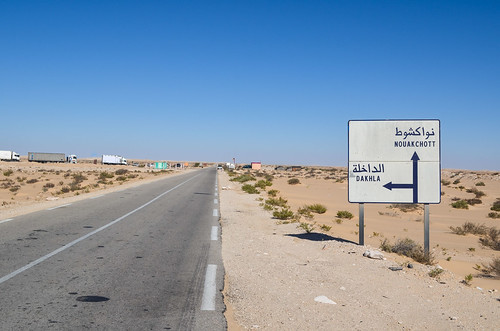
Another iron ore train from Zerouat is coming to the port as I pass again the crossroads where Dakhla, Nouadhibou and Nouakchott are signposted. This crossroads is also where the road coming from the Dakhlet peninsula makes a right angle turn and runs parallel to the border with Morocco. So from now on, the wind is no more coming from the front, but from the left, and even slightly from the back.
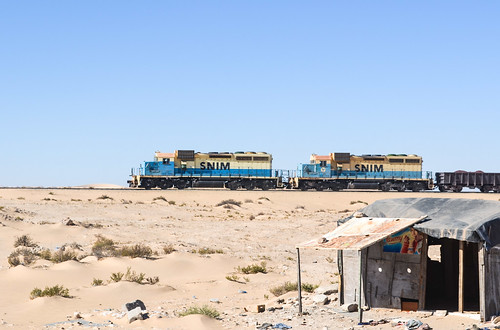
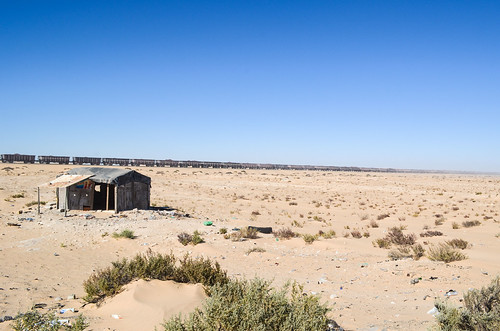
There are plenty of houses along this stretch of the road. Many wooden houses, just 4 walls and a roof, sometimes slanted as if the wind was forcing against them.
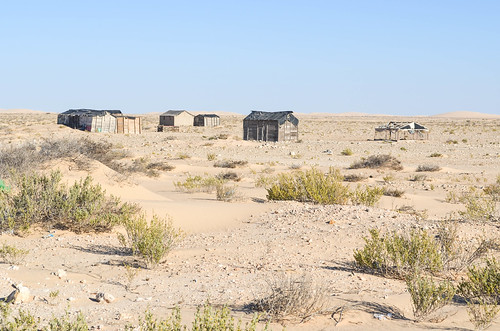
I have one scary moment, when the buttons of my dSLR go unresponsive. Maybe it has enough sand dust into it to break down? I can do nothing against electronic breakdowns and I dread them. I had sometimes my phone powering off randomly (but it stopped, maybe it was the cold), my compact camera showing a “lens error” message and blocking with the lens out (solved with forcing on the lens when the motor activates, but the picture quality is getting worse and worse anyway), and now the Nikon going handicapped. Fortunately after some minutes and pressing everywhere, the settings reset and it works again. I can only hope for it not to happen anymore. I already have 2 black spots on every picture with a bright blue sky and there is no one in the towns around, until Dakar, to clean my sensor.
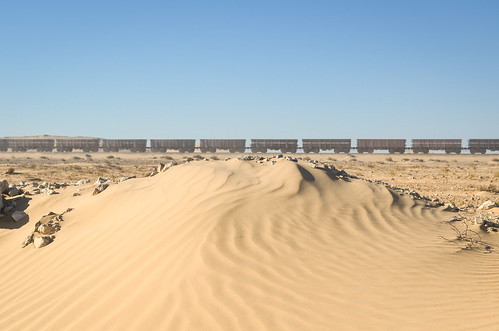
My insignificant highlight on the day is to see the shadow of my wheels between the shadow of my panniers. For a while the sun is right behind me while I am going east.
It is 18:15 when I am stopped at a gendarmerie checkpoint and I have 20 kilometers left to Bou Lanouar. The gendarme makes a phone call and tells me I have to camp with him here. I am passed on the phone, and the “big boss” explains that Bou Lanouar is “very very far” and I can’t make it before night. But I know what I have to cycle and I know the current time and the sunset time, and it is more than realistic to make it.
It appears that the big boss doesn’t even know what time it is. By the way, I have not seen any clock in this country yet. There is anyway no schedule, no opening hours, no fixed departure for the train, etc. Things happen when they happen. I could have changed time zone a week ago that it would go unnoticed.
Anyway, the big boss agrees to let me go from the gendarmerie checkpoint. I want to be in Bou Lanouar tonight so that from the morning tomorrow, I have the wind in my back until Nouakchott. Indeed, this village is at another right angle turn of the road, where it goes straight south.
I reach Bou Lanouar with enough daylight left to look for a good auberge. There is one just at the entrance of town, but it is closed, as many businesses of the tourism industry. The village streets are just sand pistes, and pushing a fully loaded bike in the sand is as tiresome as carrying it on one shoulder.
One man in the village is the father of the auberge owner and calls him to open to me, he didn’t hear me banging on the door. After making the price drop (bargaining here seems less playful than in Morocco, the buyer just repeats his price stubbornly until the seller agrees), I am introduced to the pregnant goat, the goat for milk and the goat soon to be slaughtered.
I am completely exhausted from those 80 km with nasty wind and there is no water. Here, it’s electricity but no water. It finally comes later and I can sleep clean and well, before making the last straight line of 400 km of desert until Nouakchott.
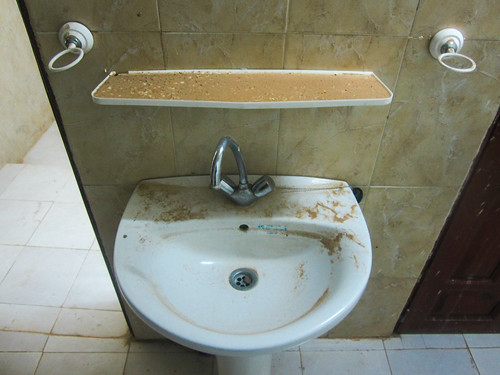
The pregnant goat of yesterday has now twin baby goats trying to walk correctly. I get into the village to get bread for breakfast, and it is again different, very thick and heavy little baguettes.
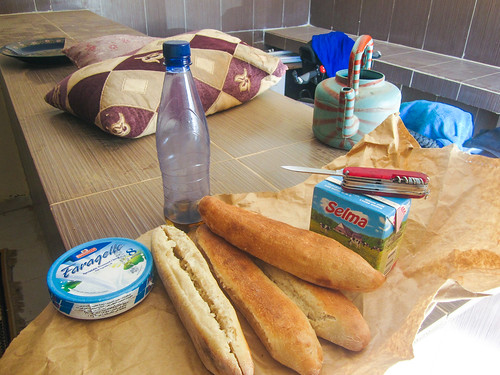
Everything here seems more expensive than in Morocco. It is mostly imported from there and gets a 50% or 100% price increase.
Twenty kilometers after the exit of Bou Lanouar, I am stopped for a gendarmerie checkpoint. The first officer asks me where I’ve been and that he’s been looking for me (when the big boss knew I was staying in the village). A second officer comes by quickly to tell me not to wait and to hurry quick quick and go until the next checkpoint. Then a third one joins the discussion to say I still need to hand over a fiche. So I leave this confusing checkpoint, refusing the tea invitation of a shop lady, and hit the very hot road.


I feel (and it’s true) that I drink much much more than in Western Sahara. It is significantly hotter. My water bottles, even filled with cool water, get almost instantly warm. It’s better to drink warm water than no water, but when there is a road shop an ice cold coke feels better than ever. And I can’t help thinking of another one as soon as I leave the shop.
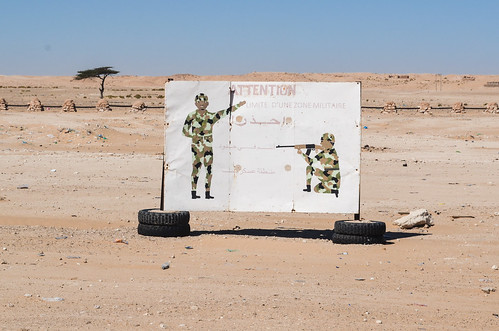
The most prevalent animal by the road since the start of Western Sahara is by far the exploded tire. Every time I look a them in case it’s a skin of a snake. And then, finally it’s a snake. I’m entering the land of nasty bugs and scorpions too.
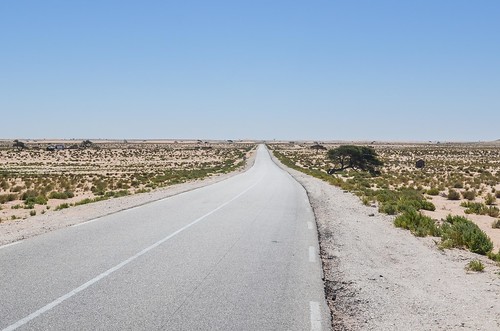
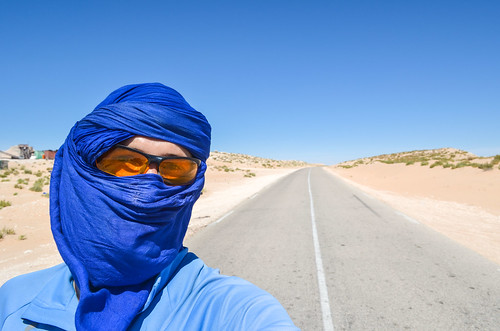
The road also feels much more like a desert than in Western Sahara. It’s much hotter, there’s much more sand, and by being 20 or 30 km away from the coast, it feels also much more like being far from everything.
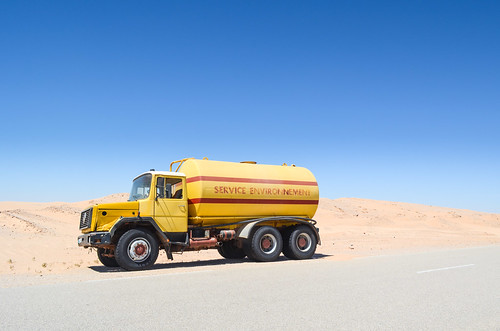
There is very little traffic on the road. Almost no trucks. Like if there was no commercial exchange between the first and second city of the country. Unless everything is done by boat.

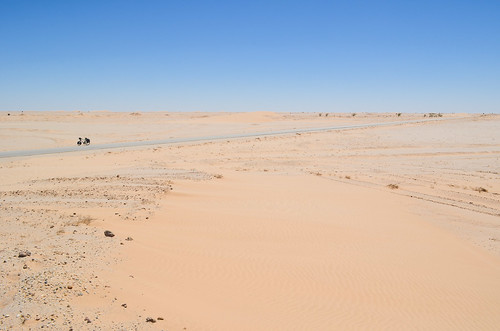
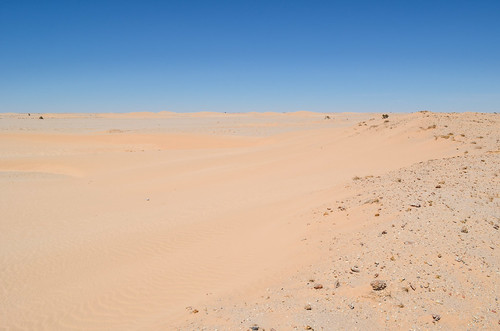
So I look on the horizon line and try to guess what are those little shapes. Camels or trees? They must be mirages as from one second to another, the number of little shapes increase tenfold.
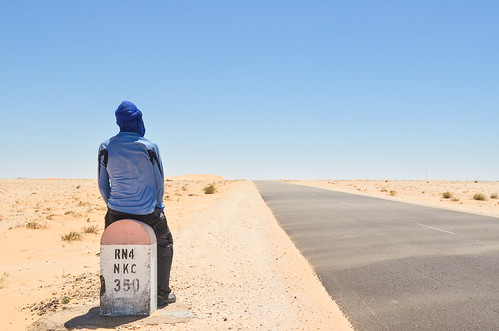
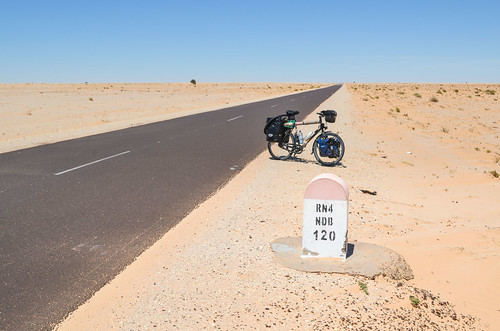

I reach the next gendarmerie checkpoint at 17:00 after 120 pleasant kilometers. This one is located at the crossroads with the Tasiast mine, a gold mine operated by a Canadian company.


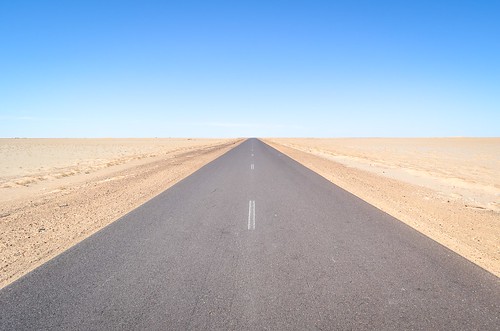



I feel tired enough to sleep here, but the gendarmes ask me if I can continue 40 km until the next checkpoint. Seeing a very loud goat just near where I would be sleeping, I convince myself that those 40 km taken today will ease the next days, and after a not-warm coke, I take the road again. With the wind helping, it goes by very quickly at 30 km/h in average. The most difficult here is neither the physical fatigue nor the mental strength to have against the monotonous road, but the thirst. I am always thirsty.
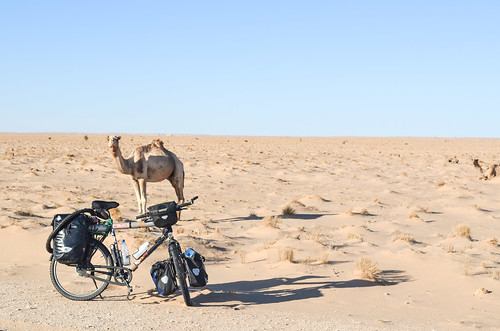

I reach the Gare du Nord before sunset where I am welcomed like a VIP by a gendarme without uniform (and apparently there’s a lot of army/police/gendarmerie disguised as camel shepherd, fisherman, infiltrated everywhere). This station is 235 km away from both Nouadhibou in the north and Nouakchott in the south. We watch the sunset over the Parc National du Banc d’Arguin, the area between the road and the ocean. This is where La Méduse wrecked in 1816 inspired and Géricault for the Raft of the Medusa painting.
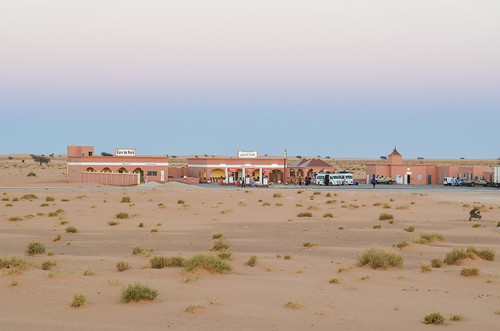
The moon is rising just after and and I am hosted in the headquarters of the gendarmerie, a simple building with 3 square rooms furnished only with blankets. I learn how to make the Mauritanian tea, poured in small glasses half filled with foam (very important), which takes 10 times longer to make than to drink.
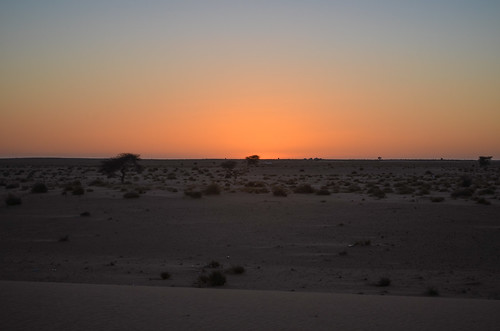

I wake up not the nicest way with dozens of flies around and inside my face. They are part of the daily life and are annoying everywhere. Even on my bike at 30 km/h, they manage to fly around my head like electrons in the atomic model. The gendarmes hurry me to leave with a “you have to reach Nouakchott today” … 235 km .. okay. Some policemen in Morocco were good at nonsense too:
“- You can’t go this way. The next town is too far, like 20 km, and it’s night soon. It’s dangerous at night.”
“- OK, so where can I sleep?”
“- You must return to the previous town. It’s 50 km”.
“- … ”
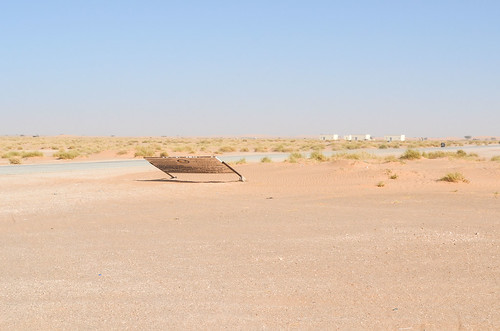
It is very windy and I have an average of 35 km/h. It goes super fast except when a truck is coming the other way, offering me an aggressive sand shower.

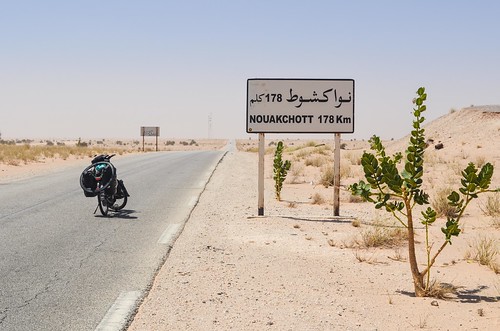
I make soon a stop for camel milk, sold at almost every tent by the road. And it can’t be fresher, the camels being roaming around.


Overall, I find people drive correctly on this road. I didn’t expect it when the driving licence is just a paper costing 150 € (or, without, 3 € max at each checkpoint). Cars and trucks overtake well on the other side of the road.

It is really warmer and I keep sinking warm water bottles. I am offered to refill at a cell tower by the family living there, and they also invite me to drink the tea. A tea stop requires calculation, as it means doing 3 times the preparation procedure, which takes, doing quickly, almost an hour. But I have time until the next gendarmerie checkpoint where I will be ask to stay for the night, so I can accept.
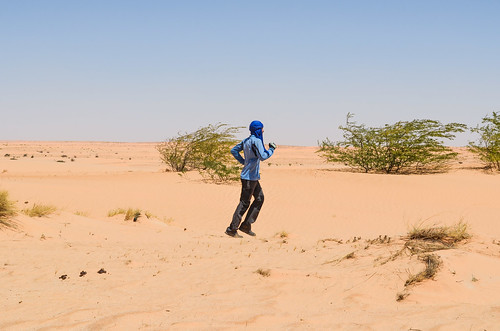
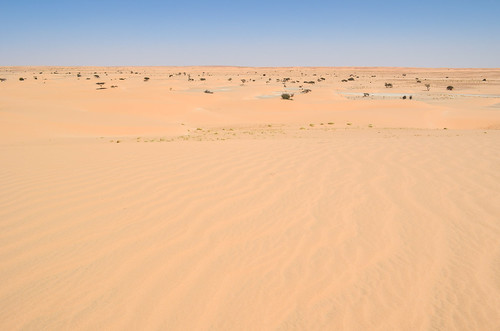
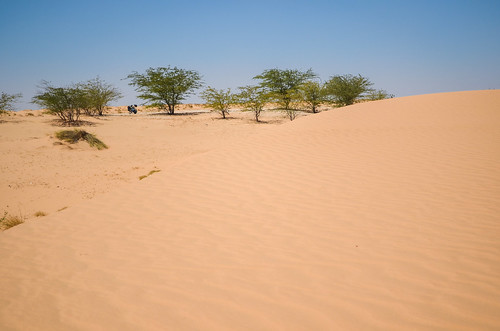

So I stop at the last gendarmerie checkpoint in Tiwilit, 90 km to Nouakchott. It is just after a small fishermen village where all the kids ran to me asking for a gift, “Donnez moi un cadeau”, with the elderly around wondering how many presents I’ll take out of my panniers. It’s is very uncomfortable and maybe explains why Santa Claus only travels once the kids are in bed. And it is not what I expect when I am just thinking about finding a cold drink.
Fortunately the checkpoint is quiet and even has small huts to sleep in for cheap. With 160 km yesterday and 140 cycled today, I have only 90 km left for tomorrow until the capital Nouakchott, making it an easy day.
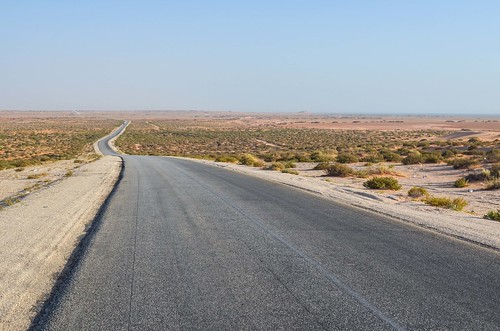
I have in mind to reach Nouakchott early on this Friday so I can go by the police headquarters to correct or extend my visa, expiring today thanks to the embassy in Rabat processing visas doing all the mistakes they can do. Most of the travelers I’ve met were also given fantasy dates, like visas starting the day of application (from Rabat, which is 2000 km from the Mauritanian border with the shortest route).
Small ants managed to invade my food pannier despite my protections. After cleaning each cookie for breakfast, I can take the road under a wind from the west, making my progress much slower than expected.
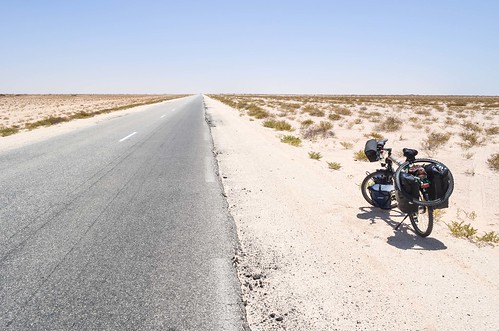
It is also really hot and on the top of going slower than expected, I feel like resting several times in the shade of the rare wooden houses by the road. Those don’t have anything fresh to drink. In the end, the 90 km fill up my day.
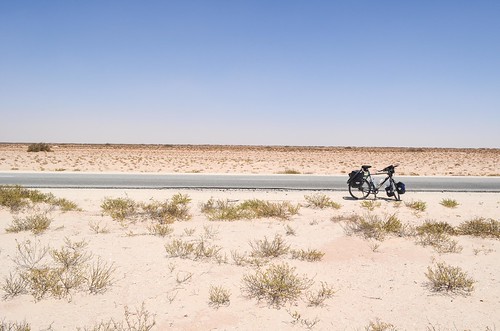
The customs checkpoint help me refill water and take a rest, in a building owned by the flies. The following police checkpoint informs me that the weekend in Mauritania is Friday and Saturday, meaning that I could visit the administration for my visa only from Sunday.

The road being the single one between Guelmim and Nouakchott, it’s easy to get information about what’s happening. It seems we were 5 bicycles simultaneously on it. I meet the Spanish one in the auberge where I rest for a few days.

In the evenings, the flies are replaced by mosquitoes. They bite me through my clothes. Very annoying but I didn’t mind so much, until I checked a malaria map showing the risk zone starting from exactly Nouakchott. So I just crossed this invisible barrier of the malaria zone, a zone that will last much longer than the Sahara since I’ll have to be careful about mosquitoes until Zimbabwe or so.

All in all, this road felt very safe and more lively than in Western Sahara. I remember that while still in Morocco, I received many warnings against visiting Mauritania (all from people having never been in the country), because of kidnappings, terrorists, war in Mali, etc. I had checked the possibility to fly over Mauritania until Dakar, to take a boat around, to hitch-hike a truck … for nothing. I didn’t hear anyone talking of those dangers, either from the gendarmerie officials or from the overland travelers. Everybody seem to welcome foreigners with respect and security. The impression we get about Mauritania from outside is totally disconnected from the (too) quiet life inside.
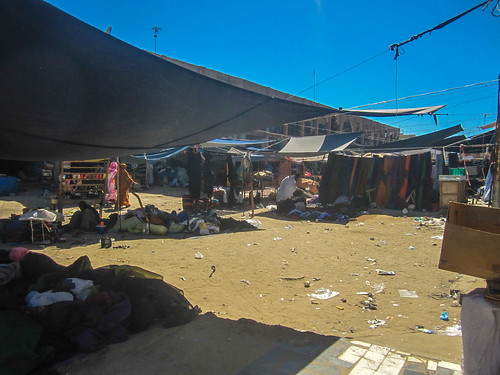

By the way, they were apparently in discussion with the French government to remove the risk areas from the map of advice to travelers. It is currently recommending to avoid all non-essential travels, like in the whole region. The orange and red colors are seriously killing the tourist industry, which is sometimes a lot of fresh money flowing into remote regions. But the war in Mali stopped everything.
Walking in Nouakchott is very hot and it’s easily understandable why there is no one outside and little activity between 12:00 and 17:00. The roads are sandy and dusty, carrying taxis, held together with strings and duct tape, as well as new 4x4s. With my cheche covering my head, I am often mistaken for a local (even with Quechua pants and Salomon trail shoes) which is great to walk in the markets incognito and peacefully. The city is however of very little interest and has a smaller feel than even Dakhla.
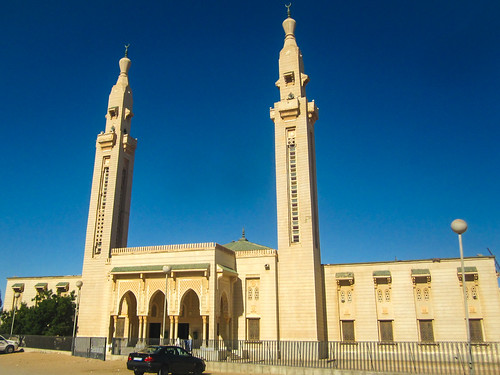
Thanks to the owner of the auberge Sahara, a nice play to stay in Nouakchott, I learn that the expiry date on my visa is actually the last date to enter the country, and the visa lasts anyway 30 days from the day of entry. It is not obvious at all since the visa, like the embassy in Rabat, has no information about it. It forces the Spanish cyclist to complete the 2700 km between Rabat and Saint-Louis, Senegal, in less than 30 days. So from now I have two options: get an extension for 60 € (same price for 3 months or 3 days), or go to the Senegalese border with my current visa, theoretically in good standing, but being ready to face some problems with the playful officials who like money. After noting down the phone numbers of Nouakchott’s police VIPs, I choose the second option.






J’ai pris le train de Nouadhibou à Choum, il y a quelques jours. Il est parti à 16h30 ( effectivement depuis la gare de voyageurs) pour arriver à 3h30 du matin à Choum. Puis vélo de Choum à Nouakchott : beau paysage de Choum jusque 50 kms au dud d’Atar, puis très monotone.
Vente d’eau + nourriture à la gare de Choum ( vente ambulante).
Prévoir de l’aide pour monter le vélo dans le train ( un mauritanien m’a pris 3€).
Super cool ! Partage un lien de ta video ou albums si tu publies !
An important correction is that, as of 2018, the train stops at the Gare des Voyageurs, which is about 10 km from the centre of Nouadhibou. Recently, it has been arriving later, people say around 6 PM, though in my case it arrived well after dark, at about 9 PM.
Hi,
I’m planning to cross the sahara this winter, I just wanted some extra advise about the risks for a woman alone, you think it is ok to cycle by myself?
I cycled the mohave desert in California last summer and that was good, bnut of course the stretches weren’t as long as they will be on this route.
Hope to hear from you,
Olivia
Salut ! Je suis à Tarfaya sur mon vélo direction le sud, merci pour tout ces renseignements, je roule sur tes traces !
A bientôt !
Bon vent! Profite du désert, c’est vraiment chouette en fin de compte, car une fois au sud du sénégal la rain forest te bloque la vue jusqu’en Angola.
bonjour victor tu as des info fraiches sur la route en Mauritanie s’il te plais
Hello!!
J’allais lui poser la même question pour savoir si c’est réalisable!!!
Amicalement,
Pierre
hello,
toujours de belles aventures et tu nous fait toujours voyager, la faune est plus petite, elle n’aboie plus, mais elle pique semble t’il.
Pour la poussière de sable et les appareils photos ça ne fait pas bon ménage ! étanchéité au moins deux sacs plastiques l’un sur l’autre et encore ( mauvais souvenir en Tunisie ).
bon courage pour la suite .
A+